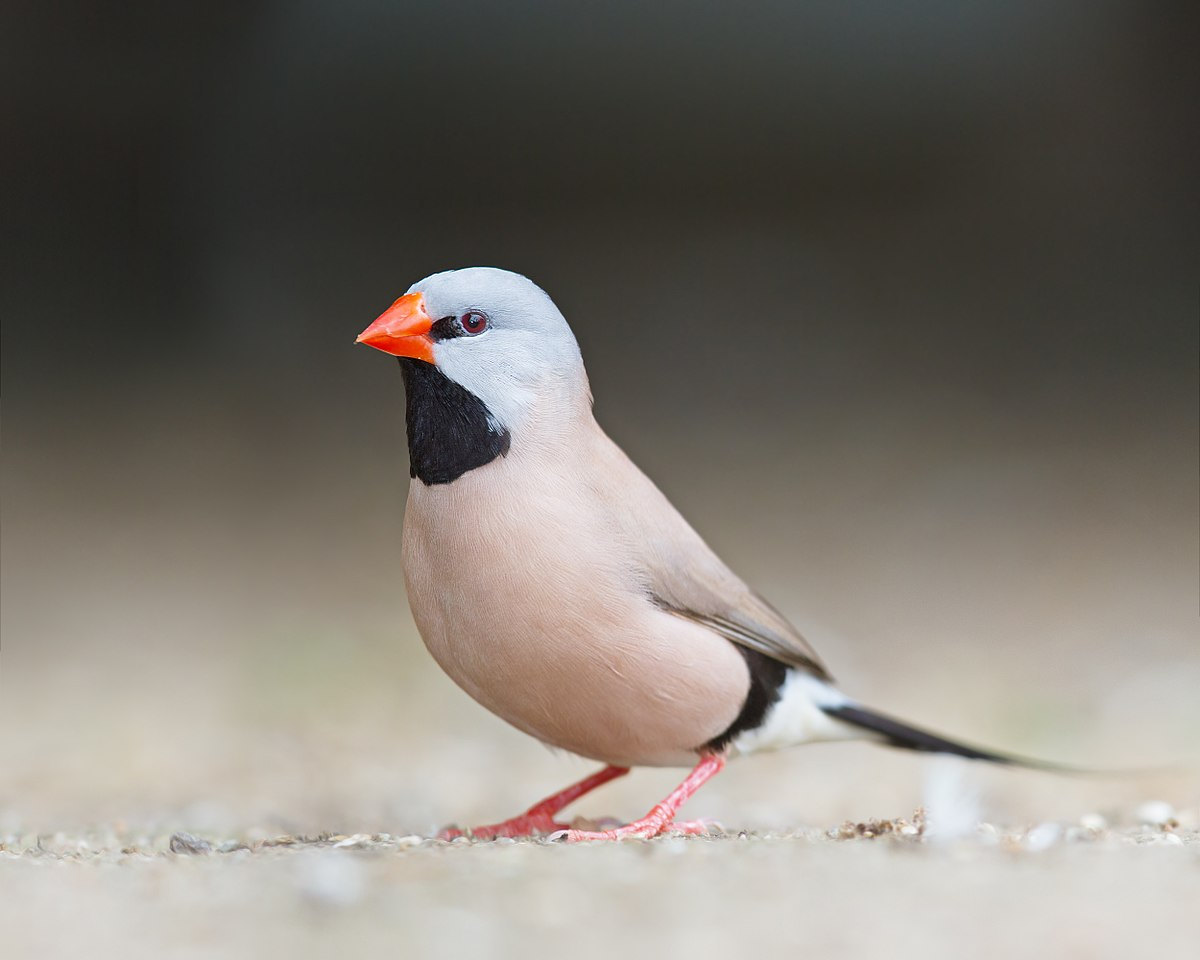Shaft-Tailed Finch

Description
The shaft-tail finch (Poephila acuticauda) is a common species of estrildid finch found in Australia; also known as the blackheart finch, long-tailed finch, Heck's grassfinch, Heck's grass finch, and Heck's finch. It is a predominantly fawn-coloured bird with a pale grey head and prominent black bib and eyes. It has an estimated global extent of occurrence of 1,000,000–10,000,000 km2. It inhabits dry savannah habitats in Australia and adapts readily to aviculture. The IUCN has classified the species as being of least concern.
The adult long-tailed finch is around 15 cm (6 in) in length. It has a prominent roundish black bib on its throat and upper chest and a long pointed black tail. It has pinkish brown upperparts with paler plumage below its bib over the lower breast and abdomen. It has a grey head, a white ear-patch, and black lores. It has black patches on its upper flanks and its rump and undertail coverts are white. The beak colour of the adult long-tailed finch varies from red through orange to yellow. The subspecies with red beaks is sometimes called Heck's grass finch Poephila acuticauda hecki, and the nominate subspecies with orange or yellow beaks is sometimes called the long-tailed grass finch. Males and females are similar, except the females may be slightly duller and may have a slightly smaller bib. Females have shorter wings and tails than males on average, but their measurements, as well as throat bib size, generally lie within the range of male measurements. Furthermore, male and female plumage is indistinguishable in ultraviolet and visible light. A study published in 1999 showed that male long-tailed finches were unable to determine the sex of unfamiliar members of their species unless the latter bird declared its sex by song. Juveniles have black beaks and shorter tail feathers.
Scientific Name
Poephila Acuticauda
Country Of Origin
Size
Life Expectancy
Noise Level
Distinctive but pleasant calls, plaintive, metallic
Characteristics
Shaft-tailed finches are popular cage birds all over the world because they are hearty, handsome and easy to care for. They are bold birds and seem to enjoy interacting with their owners from inside their flight cages or aviary. Shaft-tailed finches can be domineering toward other birds in mixed aviaries and so careful observation is important. .
Behavior / Health Concerns
Shaft-tailed finches are usually good breeders, but picking out a true pair can be tricky; however, male shaft-tailed finches are usually a bit bigger with more pronounced chest bibs and redder beaks and legs. In mature shaft-tailed finches, the males central tail feathers will usually be longer. Shaft-tailed finches form strong pair bonds and couples are usually very devoted to each other.
Shaft-tailed finches prefer to sleep inside a nestbox or basket, and one should be provided for this reason. They are enthusiastic eaters and will usually take most any healthy food. Whole-grain bread, chopped broccoli grated hard-boiled eggs are popular items. A good-quality finch seed mix and a cuttlebone complete their basic diet needs. Shaft-tailed finches are equally at home in flight cages or aviaries but need some lateral space for flying. Natural, nontoxic, disinfected branch perches are perfect for keeping their feet flexible and healthy.
Shaft-tailed finches seem to take pride in their appearance and always seem to look neat and clean. This is an inquisitive species that seems to enjoy small parakeet/canary toys.
Expert Advice
“Shaft-tailed finches occur in a number of color mutations including white, fawn and Isabelle. There is also a yellow-beaked form, which is considered by many to be a separate subspecies. The shaft-tailed finch has two aristocratic relatives that are rare in the United States: masked grass finches and the Parson’s finch. The shaft-tailed finch’s Latin name is Poephila acuticauda, which translates as “grass-loving sharp-tail.”
— Karl Lieberman